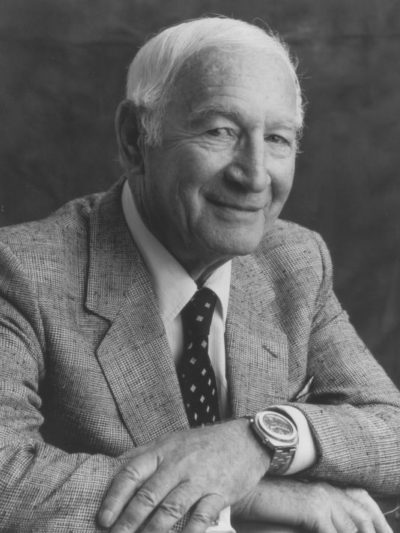Zora Arkus-Duntov (Zora Arkus-Duntov)

Zora Arkus-Duntov (December 25, 1909 – April 21, 1996) was a Belgian-born American engineer whose work on the Chevrolet Corvette earned him the nickname “Father of the Corvette.” He is sometimes erroneously referred to as the inventor of the Corvette, although that title belongs to Harley Earl. Zora joined General Motors in 1953 after seeing the Motorama Corvette on display in New York City. Perhaps it was just fate that Zora happened to be among the thousands of people who attended the GM event. Zora found the car to be visually superb, but was disappointed with what was underneath. He wrote Chevrolet chief engineer Ed Cole that it would be his complement to work on such a beautiful car; he also included a technical paper which proposed an analytical method of determining a car’s top speed. Chevrolet was so impressed that engineer Maurice Olley invited him to come to Detroit. On May 1, 1953, Zora Arkus-Duntov started at Chevrolet as an assistant staff engineer.
Shortly after going to work for Chevrolet, Zora Arkus-Duntov set the tone for what he was about to accomplish in a memo to his bosses. The document, entitled, “Thoughts Pertaining to Youth, Hot Rodders and Chevrolet”, laid the foundation for the strategy that Chevrolet has used ever since to create one of the most successful performance parts programs in the industry. Chevrolet quickly became one of the most successful manufacturers ever in the history of motor racing. Soon, Zora became director of high performance at Chevrolet and helped to transform GM’s largest division from a conservative company into a youthful, exciting one. In the process, he would change the Corvette from a docile roadster into a formidable sports car that challenged Porsche, Ferrari, Maserati, and Mercedes-Benz. As was his way, Zora led by example. After helping to introduce the small-block V8 engine to the Corvette in 1955, providing the car with much-needed power, he set about showcasing the engine by ascending Pikes Peak in 1956 in a pre-production prototype, setting a stock car record. Not satisfied, he took a Corvette to Daytona Beach the same year and hit a record-setting 150 mph over the flying mile. In his spare time, the brilliant and vocal GM driver/engineer also developed the famous Duntov high-lift camshaft and helped bring fuel injection to the Corvette in 1957. He is credited for introducing four-wheel disc brakes on a mass-produced American car for the first time.
In 1962, Zora Arkus-Duntov launched the Grand Sport program. The original idea captured the interest and imagination of Corvette fans all over the world. The idea was to create a special lightweight Corvette weighing only 1,800 pounds and race it on an international circuit against not only Cobras and other GT-Class cars, but also racing-only prototypes from Ferrari, Ford and Porsche. It also served to keep non-racing GM’s Corvette image somewhat in play in the face of Ford’s “Total Performance” publicity onslaught, which included Carroll Shelby’s Cobras. Power for the Grand Sport was to come from an aluminum version of the small block V8, equipped with special twin spark plug cylinder heads. At 377ci, output was a projected 550 hp at 6,400 rpm. But as it had so often, GM policy prohibited Zora from going racing, but not before five Grand Sports were built. The five Grand Sports eventually fell into the hands of private owners, and Zora was able to support them in spite of the official ban. Zora Arkus-Duntov died in Detroit on April 21, 1996, and his ashes were entombed at the National Corvette Museum.
Born
- December, 25, 1909
- Belgium
Died
- April, 21, 1996
- USA
- Detroit, Michigan
Other
- Ashes entombed in a display at the National Corvette Museum.

